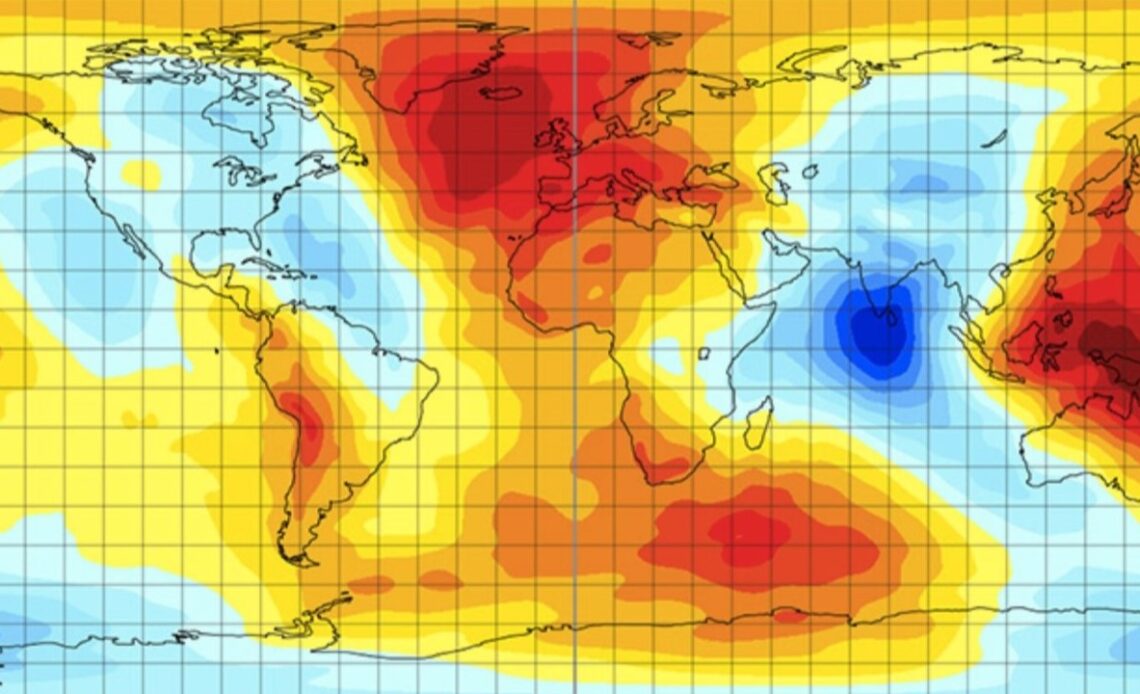QUICK FACTS
Name: Indian Ocean geoid low
Location: Laccadive Sea, southwest of India
Why it’s incredible: The huge gravity hole formed on the site of a prehistoric ocean.
The Indian Ocean “gravity hole” is the site of the deepest dent in Earth’s gravitational field. It’s a circular ocean region with a gravitational pull that’s so weak, sea levels are 348 feet (106 meters) lower there than elsewhere on Earth. Discovered in 1948, the origins of this giant gravity hole — or geoid low, as it is technically called — remained a mystery until recently.
Related: ‘A force more powerful than gravity within the Earth’: How magnetism locked itself inside our planet
The hole spans 1.2 million square miles (3.1 million square kilometers) and sits 746 miles (1,200 km) southwest of India. Various theories have tried to explain its existence since geophysicists first detected its trace, but the answer only came in 2023 with a study published in the journal Geophysical Research Letters. Researchers used 19 computer models to simulate the motion of Earth’s mantle and tectonic plates over the past 140 million years, and then teased out the scenarios giving rise to a geoid low similar to the real-life one.
The study indicated that the Indian Ocean gravity hole formed after the death of an ancient ocean called Tethys, which existed between the supercontinents Laurasia and Gondwana. Tethys sat on a chunk of Earth’s crust that slipped beneath the Eurasian plate during the breakup of Gondwana 180 million years ago. As this happened, shattered fragments of the crust sank deep into the mantle.
Around 20 million years ago, as these fragments landed in the lowermost regions of the mantle, they displaced high-density material originating from the “African blob” — a compact bubble of crystallized magma, 100 times taller than Mount Everest, that is trapped beneath Africa. Plumes of low-density magma rose to replace the dense material, diminishing the overall mass of the region and weakening its gravity.
Scientists are yet to confirm these model predictions with earthquake data, which could help to verify the existence of low-density plumes beneath the hole. Meanwhile, researchers are realizing more and more that Earth’s magma is full of strange blobs, including some that were thought to be missing and have turned up in unexpected places.
And it’s not just Earth — explorations of Mars, too, have revealed blobs of all shapes and sizes lurking below the planet’s surface.
Click Here to Read the Full Original Article at Livescience…

